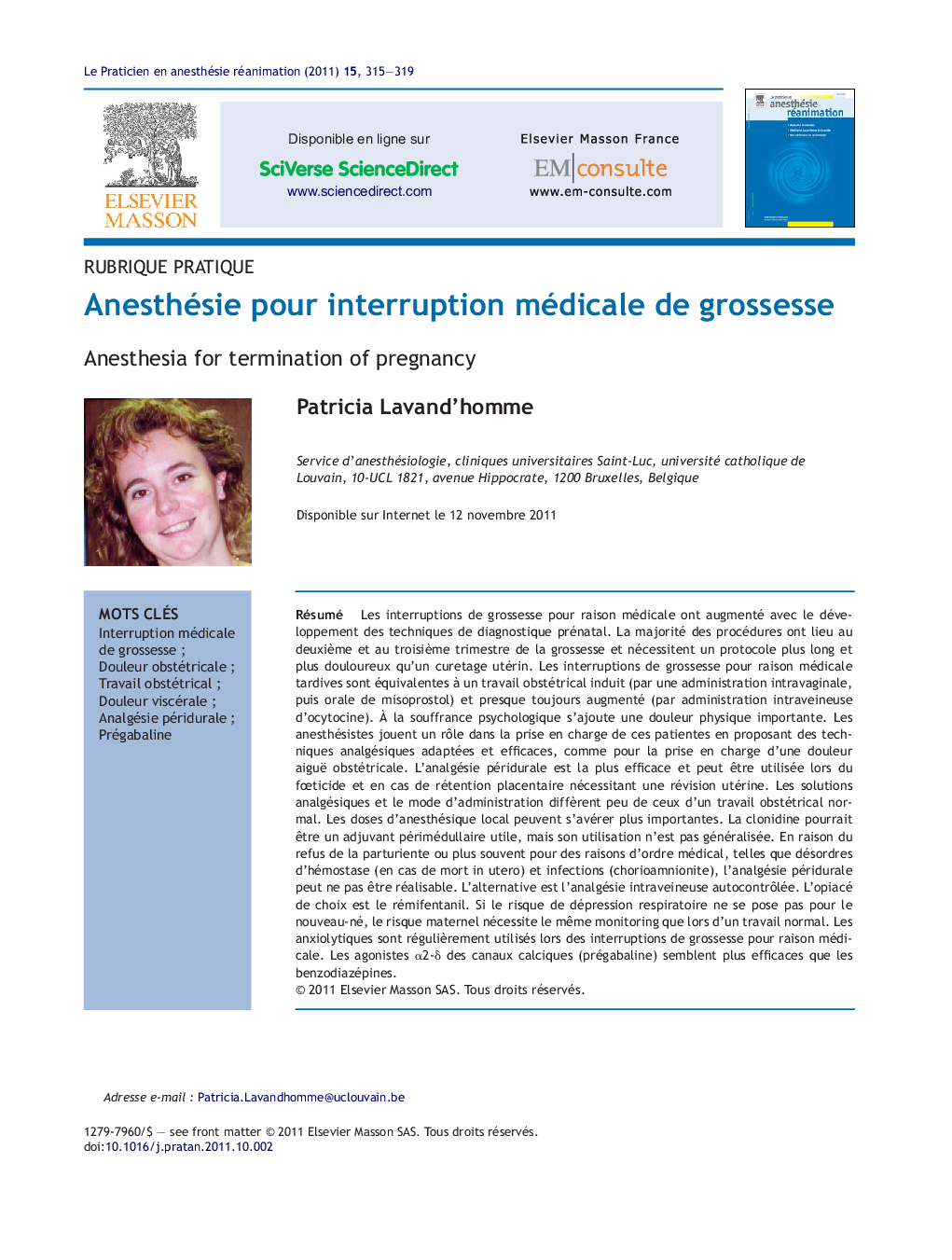| کد مقاله | کد نشریه | سال انتشار | مقاله انگلیسی | نسخه تمام متن |
|---|---|---|---|---|
| 2612762 | 1134795 | 2011 | 5 صفحه PDF | دانلود رایگان |
عنوان انگلیسی مقاله ISI
Anesthésie pour interruption médicale de grossesse
دانلود مقاله + سفارش ترجمه
دانلود مقاله ISI انگلیسی
رایگان برای ایرانیان
کلمات کلیدی
موضوعات مرتبط
علوم پزشکی و سلامت
پزشکی و دندانپزشکی
بیهوشی و پزشکی درد
پیش نمایش صفحه اول مقاله

چکیده انگلیسی
Due to the development of prenatal diagnosis, the incidence of termination of pregnancy has increased. Most of the procedures occur during the second and the third trimester of pregnancy and require a more painful and longer duration protocol than endometrial scraping. Late terminations are comparable to obstetrical induced labor (by intravaginal and oral misoprostol) and most of the time augmented (by intravenous ocytocin). Physical pain is combined to psychological suffering. Anesthesiologists play a key role in managing these patients with analgesic techniques comparable to the ones used for delivery. Epidural analgesia is the most effective analgesic technique that can be used for feticide and retained placenta requiring uterine scrapping. Local anesthetic requirement is more important than for normal delivery. Clonidine could be a useful adjuvant, but it is not commonly used. Epidural analgesia is not always possible due to maternal refusal or haemostasis disorders (after fetal death) or chorioamniotic infection. Patient-controlled intravenous analgesia with remifentanil is an alternative. It requires a careful monitoring of parturients for respiratory depression. Sedative and anxiolytic agents are commonly used. Alpha-2 delta agonists (pregabalin) may be more effective than benzodiazepines in this setting.
ناشر
Database: Elsevier - ScienceDirect (ساینس دایرکت)
Journal: Le Praticien en Anesthésie Réanimation - Volume 15, Issue 5, October 2011, Pages 315-319
Journal: Le Praticien en Anesthésie Réanimation - Volume 15, Issue 5, October 2011, Pages 315-319
نویسندگان
Patricia Lavand'homme,